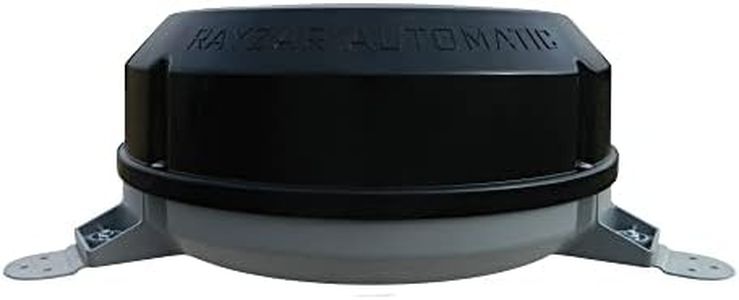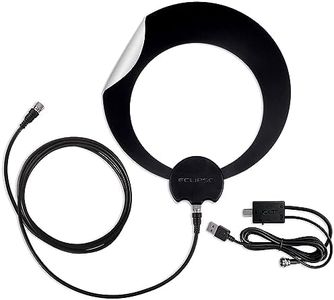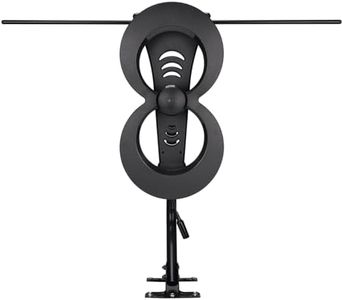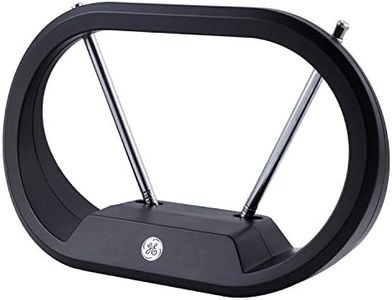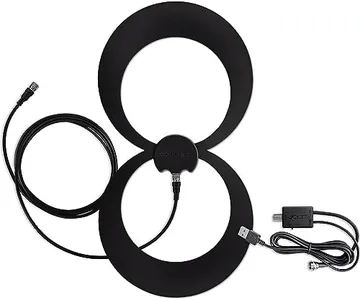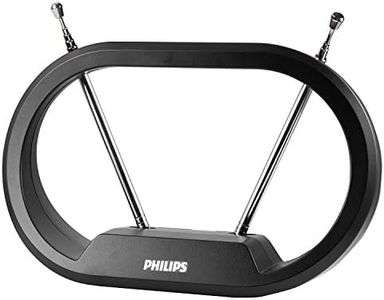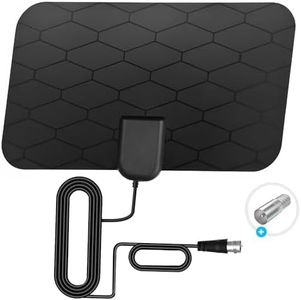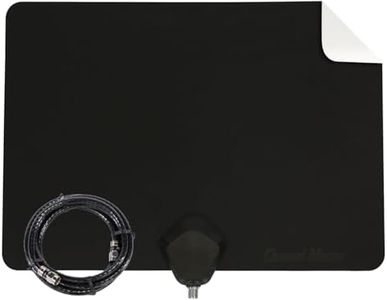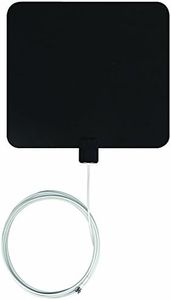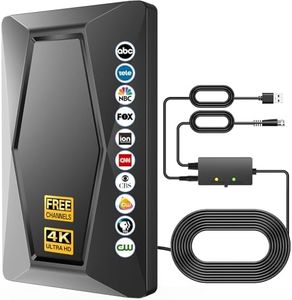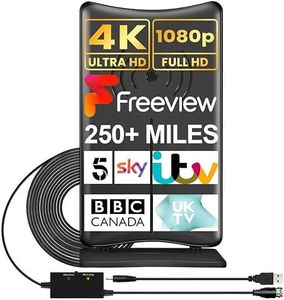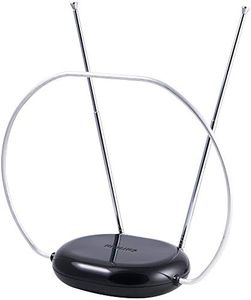We Use CookiesWe use cookies to enhance the security, performance,
functionality and for analytical and promotional activities. By continuing to browse this site you
are agreeing to our privacy policy
10 Best Indoor TV Aerials
From leading brands and best sellers available on the web.By clicking on a link to a third party's website, log data is shared with that third party.
Buying Guide for the Best Indoor TV Aerials
Choosing the right indoor TV aerial can make a big difference in the quality and number of channels you receive on your television. Before shopping, think about where you live, the distance from broadcast towers, and any obstacles like walls or buildings that might weaken the signal. Also consider your home's layout and which room you plan to use the aerial in. Remember, the right aerial will help you get clear, reliable reception—so it's important to look at key features and how they fit your needs.Signal RangeSignal range is the maximum distance an indoor TV aerial can receive signals from broadcast towers. This is important because the further you are from the towers, the harder it is for your aerial to pick up a clear signal. Generally, aerials are divided into short-range (up to about 15 miles), medium-range (15 to 35 miles), and long-range (35 miles and above). If you live in a city close to towers, a short- or medium-range aerial might work. For rural or outlying areas, a long-range aerial is better. Always check your location relative to the nearest broadcast towers to guide your choice.
AmplificationAmplification refers to whether the aerial has a built-in signal booster. This can help improve reception, especially if you’re further from towers or face interferences like thick walls or electronics. Some aerials are 'passive' (no amplifier), while 'amplified' ones have a booster. If you have weak signals or live in an area with many obstacles, an amplified aerial is useful. In strong signal areas, amplification is not necessary and can sometimes cause issues, so consider your signal environment before deciding.
Antenna Type (Flat, Loop, Panel, Rabbit Ears)Indoor TV aerials come in different shapes and styles, such as flat, loop, panel, or rabbit ears. The type affects both performance and how the aerial will blend into your living space. Flat and panel designs are compact and can be mounted on the wall or window, making them less noticeable. Loops and rabbit ears are traditional and adjustable, which can help with getting the best signal but might not be as sleek. If aesthetics and space-saving matter, choose a flat or panel model. If you value adjustability and don’t mind a more classic look, traditional types are an option.
Frequency Compatibility (VHF/UHF)Different TV channels broadcast on different frequencies: VHF (Very High Frequency) and UHF (Ultra High Frequency). To ensure you receive all available channels, your aerial should support both VHF and UHF. Some aerials are designed for only one band, while most modern ones handle both. Check what frequencies are used in your area and pick an aerial that matches, but to cover all bases, dual compatibility is usually safest.
Installation FlexibilityThis refers to how easily you can place or move the aerial in your home. Some aerials come with suction cups, adhesive backing, or stands for flexible positioning on walls, windows, or shelves. This is important because signal quality can vary even within a single room, and being able to tweak the placement helps you find the best spot. If you think you'll need to experiment for the clearest picture, look for an aerial that offers multiple mounting or positioning options.
Size and DesignThe size and appearance of an aerial affect not only its performance but also how it fits into your room. Larger aerials can sometimes pick up signals more effectively, but might be harder to hide. Sleeker, smaller designs are easier to blend into your décor but may have trade-offs in range or reception. Think about where you want to put the aerial and how visible you want it to be, balancing aesthetics with your need for strong reception.
